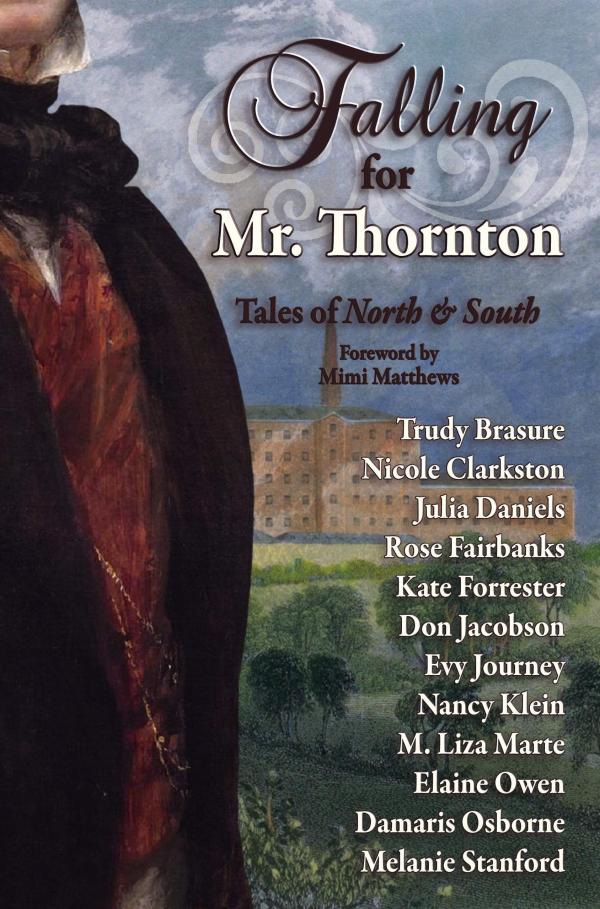From the desk of Laurel Ann Nattress: Happy Friday, dear readers. How is your holiday shopping going? I find that when there are so many gift editions of classic novels available, it is difficult to choose. Here's my criteria for narrowing down the field: A beautifully designed cover and interior. Easy-to-read text. An author bio,... Continue Reading →
A Preview & Exclusive Excerpt of Falling for Mr. Thornton: Tales of North and South, by Trudy Brasure, Et Al
Good things come in small packages! My regular readers will know that I adore a well-written short story and edited an anthology of them myself inspired by Jane Austen. Falling for Mr. Thornton is a new collection of “little gems” inspired by another classic author, Elizabeth Gaskell. Based on her Victorian-era novel North and South,... Continue Reading →
Preview of Cranford, by Elizabeth Gaskell (Oxford World’s Classics) New Edition
We have several of Oxford World’s Classics editions in our library and are quite partial to their expanded editions. From Austen to Radcliffe to Burney to Gaskell, whatever they take on, their introductions and supplemental material are excellent. The news of this new revised paperback edition of Elizabeth Gaskell’s Cranford is quite exciting. Due out... Continue Reading →
Upcoming Reading & Writing Challenges, & Literary Blog Events in 2011
There are great reading and writing challenges, and literary events in the queue around the blogosphere that have come to my attention. So many in fact, that I decided to combine the announcements into one grand post, so here goes. Sense and Sensibility Bicentenary Celebration Maria Grazia at My Jane Austen Book Club is celebrating... Continue Reading →
Elizabeth Gaskell Bicentenary Blog Tour: Ruth – A Book Review
Guest review by Regency Romantic Welcome to the 4th stop on the Elizabeth Gaskell 200th Anniversary Blog Tour! Please join me and other Elizabeth Gaskell enthusiast in honoring her on birthday today with a blog tour featuring a biography of her life and times, reviews of her books, novella’s and movies, reading resources, and a... Continue Reading →
Elizabeth Gaskell Bicentenary Blog Tour: North and South (Naxos Audiobooks) – A Book Review
Welcome to the 5th stop on the Elizabeth Gaskell 200th Anniversary Blog Tour! Please join me and other Elizabeth Gaskell enthusiast in honoring her on birthday today with a blog tour featuring a biography of her life and times, reviews of her books, novella’s and movies, reading resources, and a photo tour of her homes.... Continue Reading →
Elizabeth Gaskell Bicentenary Blog Tour Slated for September 29th
Mark your calendars for September 29th and return for a blog tour by thirteen Elizabeth Gaskell enthusiasts in celebration of the 200th anniversary of her birth in 1810. In addition to a biography of her life, her novels, short stories and movies will be reviewed, reading resources detailed, and a photographic tour of her home... Continue Reading →
Celebrate the 200th Anniversary of Elizabeth Gaskell’s Birth with a Blog Tour on September 29th, 2010
"He shrank from hearing Margaret's very name mentioned; he, while he blamed her--while he was jealous of her--while he renounced her--he loved her sorely, in spite of himself." Elizabeth Gaskell, North and South 2010 marks the bicentenary of mid-Victorian novelist and short story writer Elizabeth Gaskell’s birth on September 29th, 1810 near London. Best known... Continue Reading →
Sunday Smile: Pride and Prejudice and North and South Trailer
Bonnet drama fans are so clever. This mash-up of two of my favorite movies really made me smile. Hope you enjoy it too.
Cranford, by Elizabeth Gaskell: A Naxos Audiobooks Review & Giveaway
To prime myself for Return to Cranford, the new Masterpiece Classic sequel to last year's award-winning mini-series Cranford on PBS, I wanted to read Mrs. Gaskell’s original novel that it was adapted from. Since I am always short of reading time, I chose instead to listen to an audio recording, my favorite pastime during my commute to... Continue Reading →
Elizabeth Gaskell & Jane Austen: Comparisons are Inevitable
“A comparison (of Elizabeth Gaskell) to Jane Austen for its combination of humor and moral judgment in the observation of character and conduct is often made, not unjustly, though Mrs. Gaskell's canvas is larger than Austen's bit of ivory.” Edgar Wright Victorian-era author Elizabeth Gaskell (1810-1865) has been said to have a “wit to challenge... Continue Reading →
Return to Cranford Preview – the enchantment continues Sunday on Masterpiece Classic
The Masterpiece Classic season premieres on Sunday, January 10th with Return to Cranford, a two part series based on the stories of Victorian-era writer Elizabeth Gaskell. Dame Judi Dench reprises her role of the compassionate Miss Matty Jenkyns, the heart and soul of the small insular Cheshire village resisting the encroachment of the industrial revolution... Continue Reading →









